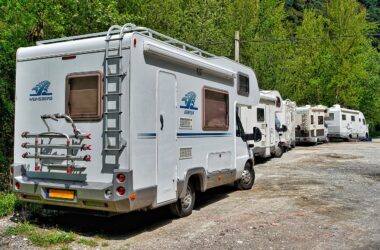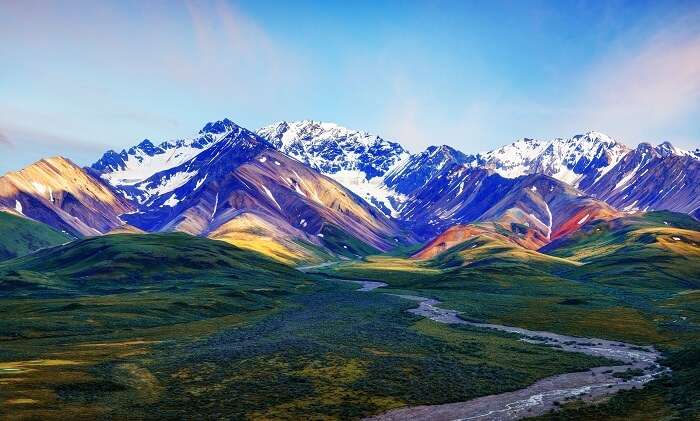Chiricahua National Monument: Located in the southeastern corner of Arizona, Chiricahua National Monument is a unique and stunning natural wonder that attracts thousands of visitors each year. Known as the “Land of the Standing-up Rocks,” the monument boasts a wide variety of geological formations, diverse flora and fauna, and a rich cultural history that dates back to the prehistoric era. In this article, we will delve into the history, geography, and attractions of Chiricahua National Monument, and guide you through everything you need to know to plan your visit.
History and Geography of Chiricahua National Monument
The story of the Chiricahua National Monument begins millions of years ago when volcanic activity formed the rocks that now stand upright in the landscape. Over time, erosion and weathering sculpted the rocks into unique shapes and formations, which gave the area its distinctive appearance. The Chiricahua Mountains, where the monument is located, are part of the larger Basin and Range Province that covers much of the southwestern United States and northern Mexico. The mountain range rises to an elevation of 9,797 feet at its highest point and covers an area of 450 square miles.
The first inhabitants of the Chiricahua Mountains were the ancestors of the Apache people, who arrived in the region around 1,500 years ago. The Apaches lived in the area until the late 1800s when the United States government forcibly removed them to reservations in other parts of the country. The Chiricahua Mountains were also home to the Butterfield Overland Mail route, which was a stagecoach line that operated between St. Louis, Missouri, and San Francisco, California, from 1858 to 1861.
Chiricahua National Monument was established on April 18, 1924, by President Calvin Coolidge to preserve the unique geological formations and the diverse flora and fauna of the area. The monument covers an area of 11,984 acres and is managed by the National Park Service.
Attractions and Activities
Chiricahua National Monument offers visitors a range of attractions and activities to explore the natural beauty and cultural history of the area. Here are some of the top things to see and do during your visit:
One of the best ways to experience the landscape of Chiricahua National Monument is by hiking one of the many trails that crisscross the area. There are 17 miles of maintained trails that range in difficulty from easy to strenuous, offering something for hikers of all levels. Some of the most popular trails include the Echo Canyon Trail, the Heart of Rocks Loop, and the Sarah Deming Trail.
The Echo Canyon Trail is a 3.3-mile round trip that takes hikers through a narrow canyon lined with towering rock formations. The Heart of Rocks Loop is a 7.2-mile trail that winds through the heart of the monument, passing by some of the most spectacular rock formations in the area. The Sarah Deming Trail is a 7.3-mile round trip that leads to the top of Sugarloaf Mountain, offering panoramic views of the surrounding landscape.
- Scenic Drives
For those who prefer a more leisurely way to explore the monument, there are two scenic drives that offer stunning views of the landscape. The eight-mile Bonita Canyon Drive takes visitors through a lush canyon lined with oak and sycamore trees, while the 25-mile Chiricahua Scenic Drive winds through the heart of the monument, passing by some of the most impressive rock formations in the area.
- Ranger Programs
Chiricahua National Monument offers a range of ranger-led programs for visitors who want to learn more about the natural and cultural history of the area. These programs include guided hikes, campfire talks, and stargazing events. Check the National Park Service website for a schedule of upcoming events.
- Wildlife Viewing
Chiricahua National Monument is home to a diverse array of wildlife, including black bears, mountain lions, coyotes, bobcats, and mule deer. Birdwatchers will also delight in the more than 170 species of birds that call the area home, including the Mexican spotted owl, peregrine falcon, and painted redstart.
For those who want to spend more than a day in the monument, there are two campgrounds available. The Bonita Canyon Campground offers tent and RV camping, while the group campground at the nearby Apache National Forest can accommodate larger groups. Both campgrounds offer stunning views of the surrounding landscape and easy access to hiking trails and other attractions.
Tips for Visiting Chiricahua National Monument
Before you visit Chiricahua National Monument, here are a few tips to help you make the most of your experience:
- Bring plenty of water
Arizona can get very hot, especially during the summer months, so it’s important to bring plenty of water to stay hydrated while hiking or exploring the monument.
- Wear appropriate clothing and footwear
The terrain in Chiricahua Monument can be rocky and uneven, so it’s important to wear sturdy hiking shoes or boots and comfortable clothing that allows for freedom of movement.
- Respect the wildlife
Chiricahua Monument is home to a wide variety of wildlife, so it’s important to respect their habitat and keep a safe distance.
- Leave no trace
As with all national parks and monuments, it’s important to leave no trace and pack out all trash and other waste.
- Check for closures or restrictions
Before you visit, be sure to check the National Park Service website for any closures or restrictions that may be in place due to weather or other factors.
Conclusion
Chiricahua Monument is a unique and stunning natural wonder that offers visitors a range of attractions and activities to explore the natural beauty and cultural history of the area. From hiking and wildlife viewing to ranger programs and camping, there is something for everyone in this land of the standing-up rocks. So pack your bags, bring plenty of water, and get ready to experience the awe-inspiring landscape of Chiricahua National Monument.
Similar Articles
Frequently Asked Questions About Chiricahua National Monument
Here are some frequently asked questions about Chiricahua National Monument:
- What is Chiricahua National Monument?
Chiricahua Monument is a protected area of over 11,000 acres located in southeastern Arizona, near the border with Mexico. It is known for its unique rock formations, which are the result of volcanic activity millions of years ago.
- How do I get to Chiricahua National Monument?
Chiricahua Monument is located about 120 miles east of Tucson, Arizona. The easiest way to get there is by car. Take I-10 east to Willcox, then head south on AZ-186 until you reach the monument.
- What are the best things to do at Chiricahua National Monument?
Some of the best things to do at Chiricahua Monument include hiking the park’s many trails, exploring the rock formations, attending ranger programs, and wildlife viewing.
- Are there any campgrounds at Chiricahua National Monument?
Yes, there are two campgrounds at Chiricahua Monument. The Bonita Canyon Campground offers tent and RV camping, while the group campground at the nearby Apache National Forest can accommodate larger groups.
- Is Chiricahua National Monument open year-round?
Yes, Chiricahua Monument is open year-round. However, some facilities and trails may be closed during certain times of the year due to weather or other factors. Be sure to check the National Park Service website before you go.
- What is the weather like at Chiricahua National Monument?
Chiricahua Monument is located in the high desert, so temperatures can be extreme. Summers are hot and dry, with temperatures often reaching into the 90s. Winters are mild, with occasional snowfall. Spring and fall are the best times to visit, with moderate temperatures and less chance of rain.
- Are pets allowed at Chiricahua National Monument?
Yes, pets are allowed at Chiricahua Monument, but they must be kept on a leash at all times and are not allowed on park trails. Be sure to clean up after your pet and dispose of waste properly.
- Is there an entrance fee for Chiricahua National Monument?
Yes, there is an entrance fee for Chiricahua Monument. The fee is $25 per vehicle, $20 per motorcycle, and $15 per person for those entering on foot or by bicycle. This fee is good for seven days and provides access to both the monument and the nearby Fort Bowie National Historic Site.
- What is the history of the Chiricahua National Monument?
Chiricahua Monument has a rich history dating back thousands of years. The area has been inhabited by various indigenous groups, including the Apache, for centuries. In the late 1800s and early 1900s, the area was used for ranching and mining. The monument was established in 1924 to protect the unique rock formations and cultural history of the area.
- Can I go rock climbing at Chiricahua National Monument?
Rock climbing is not allowed at Chiricahua Monument. However, there are many hiking trails and other outdoor activities available for visitors to enjoy.









